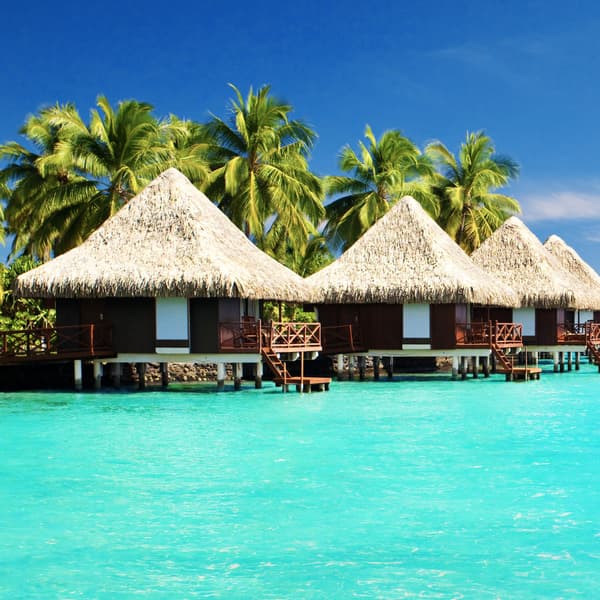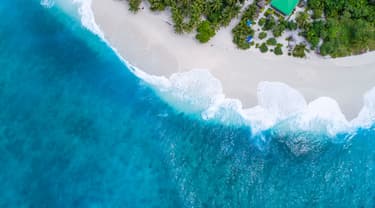Start counting the reasons why France is the world’s most visited country and you very quickly lose track.
Its popularity is obvious – the beaches, the food, the landscapes, the culture, the mountains, the sheer joie de vivre of life in France. But learning these French secrets will steer you away from the tourist trail and help you reveal some of the country’s lesser-known experiences.
Walk along Paris's Promenade Plantée

New York has its High Line aerial park, but Paris got there first with the Promenade Plantée, a 4.7km elevated park that snakes through the 12th arrondissement along a disused railway line. You get a more intimate view of Parisian rooftops from this tranquil walkway, which starts just south of the Opéra Bastille.
If you’re in the mood to shop, pop down into one of the smart boutiques and galleries that are tucked into the old railway arches beneath. Eventually the walkway comes to a halt at the Périphérique, the boulevard that encircles Paris, but carry on a bit further and you end up at the massive Bois de Vincennes park.
Wine-tasting on the River Loire

The fertile valley surrounding France’s longest river is also home to some of the country’s most celebrated wines. Vineyard after vineyard producing Sancerre, Saumur, Vouvray and Touraine, among others, fills this gentle landscape of stately chateaux, historic towns and lush forests. All along the Loire you’ll see traditional flat wooden boats called toues, which were used for centuries to transport goods.
Nowadays they’re perfect for leisurely jaunts along the river – and even more fun when combined with a wine-tasting. Head to the tiny village of Montsoreau, with its 15th-century castle which is the only one that actually overlooks the Loire, and visit the Domaine de la Paleine winery. It’s hard to find a more romantic spot for a wine-tasting than on their little toue, especially as the sun goes down over the river.
Drive or cycle up Mont Ventoux

You don’t have to be a fan of the Tour de France to get a thrill at the sight of Mont Ventoux. This mighty mountain in Provence’s Vaucluse region is one of the Tour’s toughest climbs – and most notorious, thanks to the 1967 death of British cyclist Tommy Simpson, whose memorial near the summit has become a shrine.
Cyclists of all stripes try to tackle this barren 1,912m peak, and you can watch their efforts during a less taxing drive up the mountain from the village of Bédoin. The views at the summit span an incredible range of the Alps – and there’s a lively atmosphere as families and friends cheer on the cyclists making their arduous way to the top.
Escape Avignon’s crowds on the Ile de la Barthelasse

As visitors swarm around Avignon’s glorious medieval Palais des Papes, find the quieter side of this handsome city on the River Rhône by taking the little foot ferry to the Ile de la Barthelasse. It’s the largest river island in Europe, and within its 700 hectares are campsites, farms, an outdoor pool and seemingly endless country lanes and cycle paths.
You can hire bikes here (standard and electric) to cover even more ground and pop into some of the farm shops where they’ll sell you their own organic produce. It’s a great spot for a picnic along the banks of the Rhône with the view of Avignon’s beautiful ruined bridge.
Flop on the Ile de Ré’s northern beaches

Among the islands along France’s Atlantic coast, Ile de Ré is one of the most captivating. Its long sandy beaches, pretty villages of whitewashed houses and salt marshes filled with oyster beds aren’t exactly undiscovered pleasures among Francophiles.
But head to the northern tip to the village of Les Portes-en-Ré, which is surrounded by seemingly endless beaches, the Lilleau des Niges nature reserve and the fragrant Aleppo pines of the Trousse-Chemise and Lizay forests – it’s quieter here, and all connected by a network of footpaths and cycle tracks that makes it so much more fun to explore.
Ride an electric bike in the Luberon

The mellow rolling hills of the Luberon are among France’s dreamiest landscapes. All those hilltop villages beg to be explored, and a bike is one of the most rewarding ways to get to know this enchanting region. But if you’re not quite up to tackling those hills, an electric bike can make it so much more pleasurable.
You still have to pedal, but the bike’s battery will propel you upwards with ease. Start in Bonnieux with an e-bike from Sun-e-Bike, which has routes and pit-stops in the region’s loveliest villages where you can exchange a used battery for a fresh one.
Visit the “martyred village” of Oradour-sur-Glane

One of France’s most haunting memorials to the Second World War is relatively unknown outside the country, but it’s one of the most visceral. On 10 June 1944, the Limousin village of Oradour-sur-Glane was the scene of one of the Nazis’ most brutal civilian massacres when the entire village was slaughtered and set on fire.
Although a new village was built beside it after the war, President de Gaulle insisted that the original village be left as it was as a village martyr – complete with burnt-out houses, cars and shops. It’s an eerie, poignant and unforgettable sight.
Watch the Fête de la Transhumance in St-Rémy-de-Provence

The French have a genius for turning anything into a festival, and the annual springtime migration of sheep to the Alps is no exception. The exquisite Provençal town of St-Rémy-de-Provence becomes a sea of animals as 3,000 sheep and goats are paraded through the streets before being herded up to La Petite Crau, a plateau overlooking the town.
It’s an astonishing and incredibly lively spectacle, all topped off with a massive banquet on La Petite Crau. Eventually the animals will be transported to the Alps, where cool, green Alpine meadows – instead of hot, dried-out lowlands – become their pastures until the autumn.
Find joie de vivre in France:
Have a comment or question about this article? You can contact us on Twitter or Facebook.

